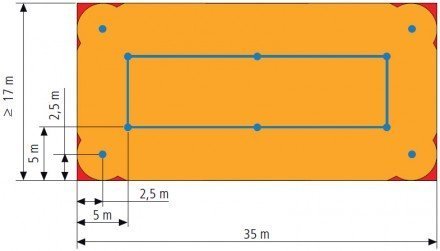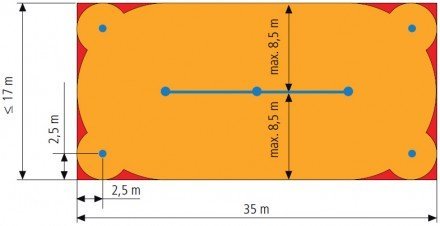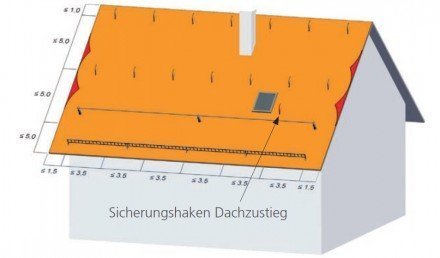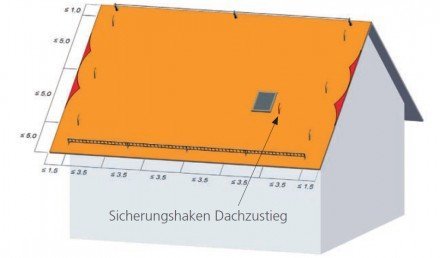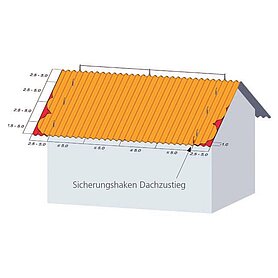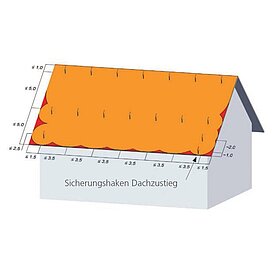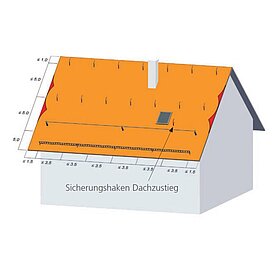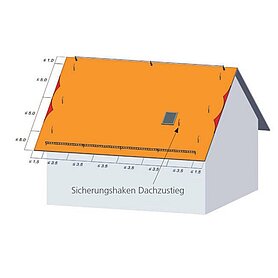INNOTECH|planning guidelines
Planning guidelines help select the perfect fall prevention system.
The slightest moments of inattention can have extremely serious, even fatal consequences. The Austrian standard ÖNORM B 3417 deals with safe working on roofs.
According to this, roofs should planned in such a way that people who later carry out the necessary repair and maintenance work are permanently protected (by constructional measures or roof safety systems, such as anchorage devices). In general, the safety equipment should be permanently attached to the structure.
The entire roof surface is a danger area.
When a person is within a distance of 2 m from an edge, there is a particular risk of falling.
In this case, appropriate protective measures must be taken. Such areas must be be closed off in a suitable way, if it is not necessary for a person to be present in them while carrying out work.
Risks of falling are deemed to be:
- Falling from the edge of a roof
- Falling through roof surfaces
- Falling through a roof opening
Anchorage devices
An anchorage device consists of one or more anchor points. It connects restraint systems with the substructure.
For a surface greater than 150 m² and from a fall height greater than 3 m, the Austrian legislator (ÖNORM B 3417) prescribes a lifeline system. In all events, a restraint system is to be preferred.
Recommended designs for pitched roofs and flat inclined roofs
In high-snow areas or for roofs without superstructures.
Horizontal arrangement of anchors along the ridge in combination with safety roof hooks (for regular maintenance and snow clearance over the entire roof surface).
Attention: Snow guards as per ÖNORM B 3418 are required
Body restraining system with horizontal mobility in combination with safety roof hooks for steep roofs
Horizontal anchoring system along the ridge combined with safety roof hooks (for regular maintenance and clearing off snow over the entire roof surface).
Notice: Snow arresting system required as per ÖNORM B 3418
Access to the anchorage device
In addition to providing the anchorage devices, safe access to the roof and to the anchorage device must be created.
Installation documentation
The person responsible for installation must provide complete documentation (photo documentation, acceptance protocol, etc.) and thereby provide the proof of skilled and professional installation. This forms the essential basis for later inspections.
Contact our planning team, that will find an individual and cost-efficient solution for you. Full service at all project phases enable a speedy realization of customized fall protection systems.








